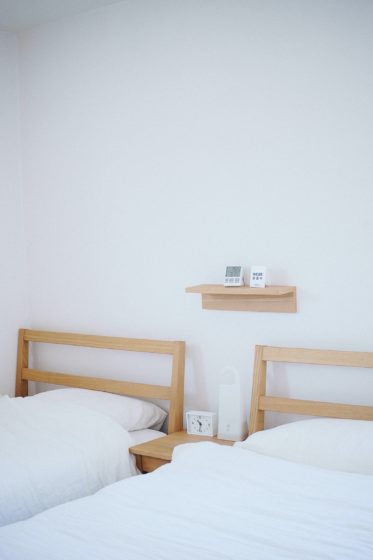Ever played musical beds? Not to be confused with musical chairs. Unlike the latter, musical beds is not a game, no music and not a lot of fun. Chances are that if you’re a parent with a child under ten, you know the score. Musical beds is when a parent ends up sleeping in his child’s bedroom so that the child can sleep in bed with the other parent. Sometimes, both parents end up in different children’s bedrooms and the children end up sleeping together in the master bedroom. Most times, musical beds happens around 3am. It’s especially common in households where parents lie with their children to ease them into sleep. When the child wakes between a normal sleep/wake cycle during the night or into the wee hours of the morning and finds no warm body next to him, he goes in search of that parent.
Depending on the culture and country in which you were raised, you may choose to have your children sleep in your bed or in the same room as yourselves until such time as they request independence.
Some parents choose to place a crib or bassinette in their bedroom when their child is a newborn. Nursing mothers, especially, find that having their children within arms reach, is more convenient. Even those who are not nursing may choose to have their child close by during the first few months. Yet other parents place their newborn in a crib within hours of bringing him or her home. Again, it appears that this decision is based on many factors – including cultural and parental beliefs.
Those parents, regardless of culture, who subscribe to what author Jay Gordon writes in his book ‘Good Nights: The Happy Parents’ Guide to the family bed, choose co-sleeping. Others read books such as ‘Solve your child’s sleep problems’, by Richard Ferber, to learn techniques on how to wean a child’s dependence on his parents during the night.
It is best to not apply any strategy while a child is very young. Under the age of six to eight months, for example, a child’s cries at night should always be taken seriously. At such a young age, a child should know that his cries are being heard and that he will be attended to. Crying is his only form of communication and he is most likely needing to be changed, fed or comforted. Contrary to what some parents believe, a child younger than eight months is not manipulating his parents by crying out in the middle of night.
Once a child is a over a year of age and is more understanding of his environment, he may use tears, sticking his finger down his throat to throw up or banging his head against the wall to convince you that he should be picked up and moved into your bed. Of course, his cries for attention shouldn’t be entirely ignored, but your response would depend on the way in which you want to encourage sleeping arrangements.
Some parents are reluctant to move their child from a crib to a bed for fear of increased mobility at night. It is true that for many children, this will mark the beginning of his standing by your bed side or even silently creeping over and next to you without your ever realizing that he is there.
Since children often sprawl themselves across you during sleep, parents sometimes find that they awake cranky and feeling as if they have not had a good enough sleep. In an effort to maintain peace and not awaken siblings, some parents will then go sleep in that child’s bed. One option might be a sleeping bag on the floor alongside the parental bed. This may help comfort a young child while not having the adult’s sleep interrupted.
When it comes to sleeping arrangements, it’s different strokes for different folks. Most importantly, everyone should start their day feeling rejuvenated, not exhausted.
